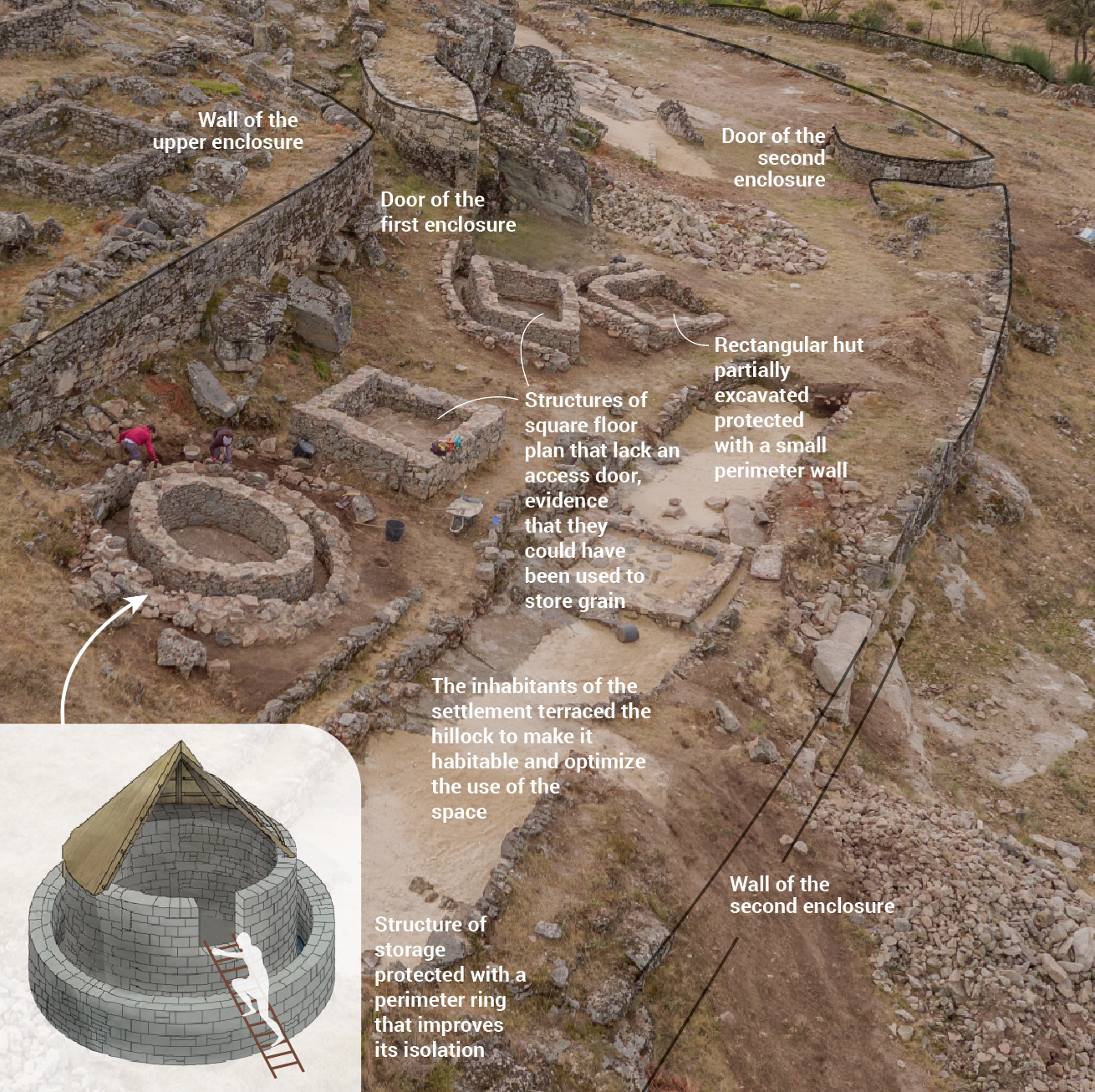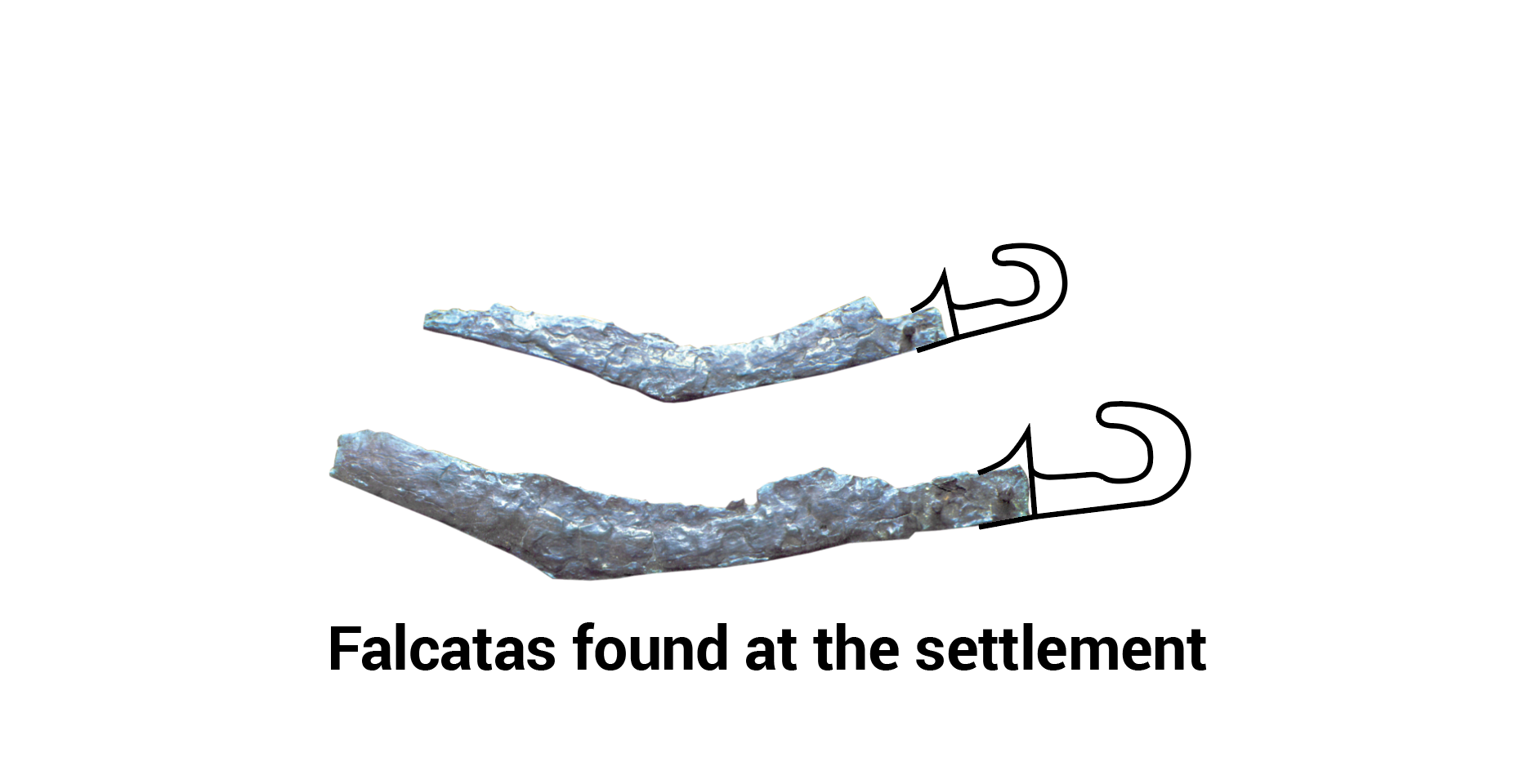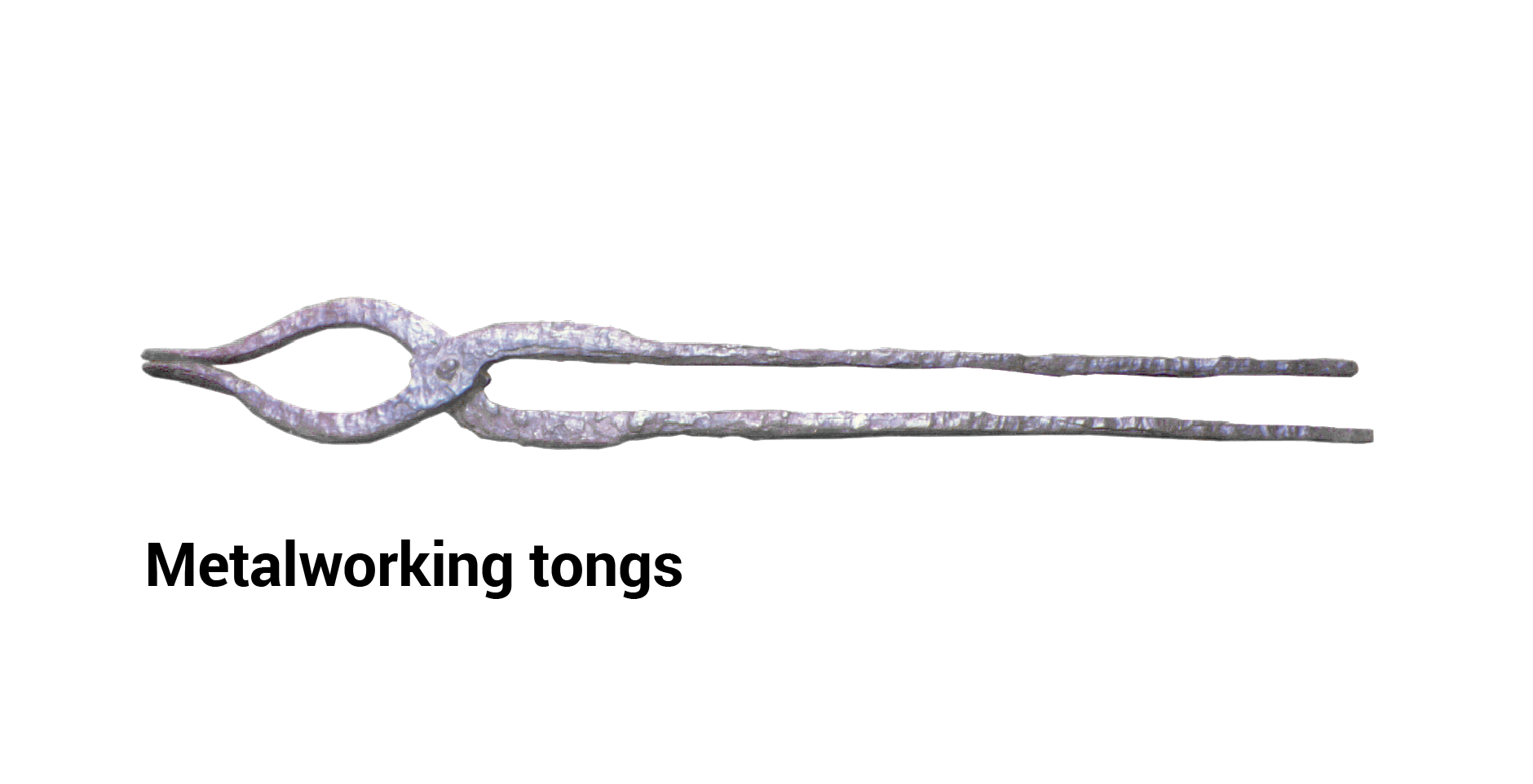Three walled enclosures
The walls are the most significant visual element of the town, which is why Taboada Chivite admiringly described them as: "erect and imposing, as if they still had lives and goods to keep". The oldest is the one that protects the upper enclosure, which was built in the first period of occupation of the settlement (8th-5th century BC), relying on the existing natural outcrops. The other two would correspond to a later period, dated to between the II and I centuries BC. The type of apparatus used in the walls is mostly polygonal, although it has sections that take a helicoid form.
Metalworking tongs
At this site metal work is evident through iron, lead and silver ingots, as well as different types of casts. That is why it was not surprising to find metalworking tongs, documented in 1985 on the wall of the acropolis, in a place near the entrance, integrated in a deposit -possibly ritual- composed of two swords and a pick. This fortified village also revealed large ash pits at the foot of the wall that links them with the development of a prestigious artisan activity: the working of metal. This trade was no stranger in A Cidá da Saceda, situated next to the various tin mines, which could favour the production of iron and bronze tools and the export to other areas. This shows that between the 4th and 2nd centuries BC the iron would have been available to practically all of the Gallaecian tribes.




